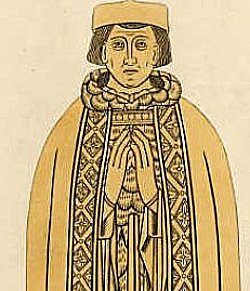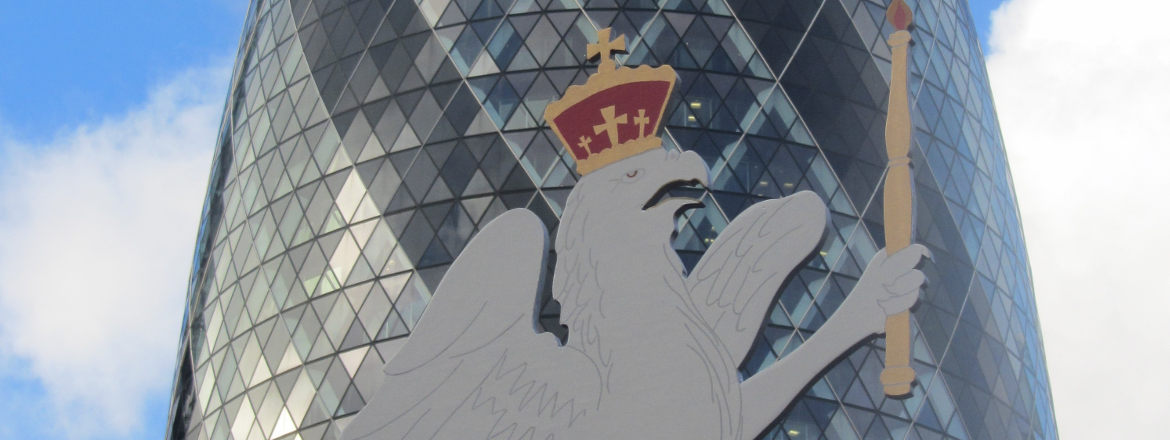
Christopher Urswick probably counted on modest posthumous fame. That memorial brass didn’t come cheap, and he wouldn’t have bargained for the elaborately decorated chantry chapel at Windsor being taken over for a princess’s tomb in future years. But pragmatists make bargains, and he had given up the exposed heights of political influence for the relative safety of semi retirement in the green fields of Hackney. So has had to settle for mentions in footnotes and bit part appearances in plays. And perhaps he would have settled for a road and a school in his adopted home town.
Like so many of the smartest operators in the Tudor world, the ones who were lucky enough, as well as wily enough, to live out their natural lifespan, Urswick appears to have stayed, for much of his career, out of the limelight.
Born in 1448 in Furness, both Urswick’s parents were lay members of the Abbey their ancestors had helped to found. Christopher probably went to school there before going on to Cambridge and ordination. As a young priest, he made the contact that was to change his life: an introduction to Margaret Beaufort, who offered him the position of chaplain in her household.
Margaret Beaufort had had a less than straightforward start in life. Heiress to the Duke of Somerset and descendant of Edward III, at the age of twelve she was married off. The choice of husband was that of the king, Henry VI, who was seeking a rich and aristocratic wife for his half brother, Edmund Tudor, son of his widowed mother’s scandalous remarriage to one of her own household. After her early death, Henry VI brought his half siblings to court and treated them with affection. But at the time of Margaret’s pathetically early marriage, one of the recurrent upheavals that future centuries were to call the Wars of the Roses broke out. The child bride’s husband, fighting for the Lancastrian cause, was imprisoned and then died of plague, and Margaret was left a pregnant widow at thirteen. Both Margaret and her baby survived the traumatic circumstances and difficult birth – but despite two more marriages she would bear no more children. Margaret Beaufort and her son Henry were to be close allies for all of both their lives, despite not meeting for long periods in the days before, against immense odds, he became king.

By the time Christopher Urswick took on his new role, Margaret Beaufort had married into the Stanley family, and her son Henry Tudor was in exile in Brittany. Edward IV had succeeded in keeping himself and his Yorkist faction in power for over a decade, had married Elizabeth Woodville and had, with her, become the father of a reassuringly large family of two surviving sons and five daughters. For as long as he lived, life in England was on a relatively even keel. But in 1483 the king died of a chill taken when he was out fishing, leaving a teenaged heir. Within weeks the faction fighting that had never been far under the surface was back. This time the two sides were fighting over who would control the young king. The events of the next months have become notorious: Edward IV’s younger brother, Richard of Gloucester, successfully argued that his brother’s marriage had not been lawful and his children illegitimate. The young Edward V and his brother soon vanished. Richard III is usually held to have had them murdered, but whether they really were killed and if so by whom has never been resolved.
As chaplain to the mother of the closest Lancastrian claimant to the throne and wife of a close ally of the new king, Urswick had a ringside seat for the tumultuous events of the next few years. Richard III was desperate to eliminate Henry Tudor, currently in exile in Brittany, by any means possible as well as to propitiate his own faction. Behind the scenes, Margaret Beaufort was in touch with the dowager queen Elizabeth Woodville, negotiating to arrange a marriage between their respective children, Henry Tudor and Elizabeth of York. Trusted chaplains were often employed as go-betweens, and it fell to Christopher Urswick to travel to Brittany as negotiator and to warn Henry of the danger he was in. From escaping from Brittany with five attendants, Henry was soon at the head of a mercenary army of French soldiers and planning to take the throne of England.
Christopher Urswick was present on the march through Wales and then England to meet the army of Richard III and present at the close-fought Battle of Bosworth, decided largely because Margaret Beaufort’s husband William Stanley, prudently waiting until the last minute to make sure he was backing the winning side, brought his 800 armed men in to fight for Henry on the day of the battle. Loyalty was a scarce commodity around kings and courts, and the new Henry VII appreciated it in Urswick, appointing him as almoner and loading him with an almost embarrassing number of appointments and rewards. He was, among other things, Dean at Windsor, where he created a chantry chapel which still exists, complete with the inscription asking for visitors to pray for the king, for Urswick and for anyone he might have offended.

Evidently Urswick tired of life at court. Among the multiplicity of deaneries, rectories and benefits of all kinds he acquired was the rectory of Hackney – on its own a decent living, valued at a goodly £35 a year in 1535. It was a sinecure rectory, which meant that the rector was not expected to do any of the work of the “cure of souls” – he appointed a vicar for that, at his own cost. But Urswick was to take an interest in local life, helping to restore the church (all that is now left is the church tower, as the rest of the mediaeval church was to be demolished after the new St John’s church was built in the 1790s). It is likely, too, that he helped to finance the building of the church house, on the site of what was to become the town hall, a building whose future is currently unclear. The vicar’s house was on a site north of the church, near where a Celtic cross now stands. And the rector’s own house was on the other site of Mare Street (then Church Street) – originally a mediaeval hall house, it is likely the Urswick improved it, adding chimneys and expensive brick external walls.
It is likely that Christopher Urswick had become disenchanted not only with life at court but with the new mood of anticlericalism that was blowing in from northern Europe. It is possible, too, that once Henry VIII became king in 1509 he did not care for those he brought with him. Too astute to fall out either with the king or with the higher echelons of the church, the Rector of Hackney gradually gave up most of his other appointments, busying himself mostly with local concerns and with correspondence. A friend of both Erasmus and Thomas More, Urswick lived out what appears to have been a peaceful old age. Evidently kindly as well as prosperous, he helped out the chronically impecunious Erasum with the (substantial) price of a new horse at least once. When Urswick finally died, probably in 1520, his will makes it clear he had kept up his interest in national affairs while concerning himself with his locality and servants – among many small bequests is 6s 8d to an “old poor man” who regularly walked over from Kentish Town to visit. Like other high status Tudors, Christopher Urswick habitually stamped his coat of arms over anything he influenced. But he added the three letters “MIA” for Misericordia – compassion. It seems to have been appropriate.

1 ping